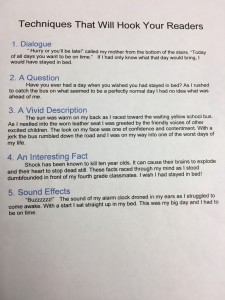Theme 7: On Moving Ground
Focus: Using Fix-Up strategies
Big Idea- Context clues help readers understand what a difficult word means. Sometimes replacing the difficult word with a synonym helps you better understand what a word means.
Review: Creating Images
Big Idea- Creating images helps you better understand what you are reading. *Using your senses helps support this reading strategy: sight, sound, smell, taste, touch, and feelings.
Vocab Pages: 218 & 232
Grammar: Common nouns
Big Idea- a non specific person, place, thing
Example: cat, man, school
Proper nouns
Big Idea- a specific person, place, thing
Example: Mrs. Ellis, Dunlap Grade, Thanksgiving
Concrete Vs. Abstract Nouns
Big Idea- A concrete noun is something you can physically see or touch. An abstract noun is something you cannot see or touch.
Example: Concrete noun- dog/ Abstract noun- love
Target Skill: Onomatopoeia
Big Idea- These are words used to describe sounds.
Example: BRRRRING! pop!
Word Study Week 1: Synonyms and Antonyms
Big Idea- Synonyms mean the same (example: big and large), antonyms mean the opposite (big and small)
Word Study Week 2: Multiple meaning words
Big Idea- Some words have more than one meaning (example: The leaves are in a pile. She leaves early for work.)
Writing pieces:
Adventure Story (example pg. 222)
Big Idea- Adventure stories have unique settings (where the story take place). These stories involve the characters participating in a new or exciting experience.
Expository (example pg. 226)
Bid Idea- An expository is an informative piece with clear groups. They include facts, definitions, and details.
Theme 7 Test: Tuesday, December 6th
